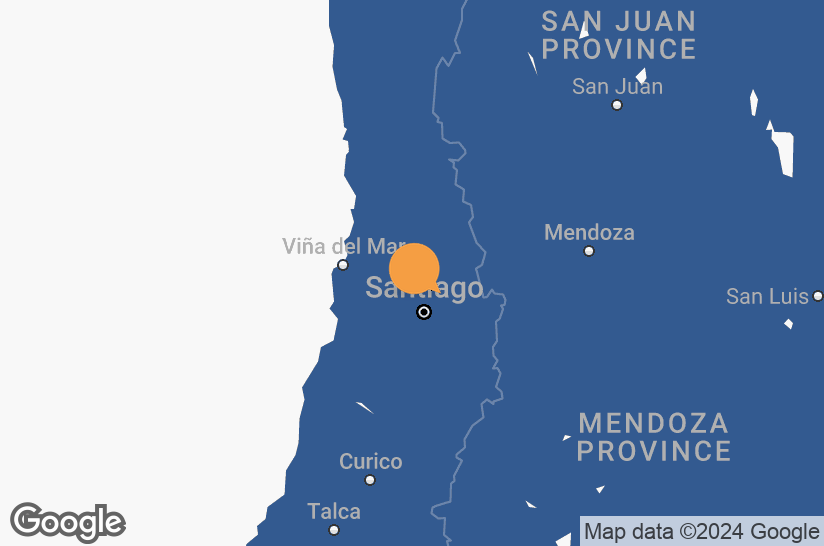Santiago airport
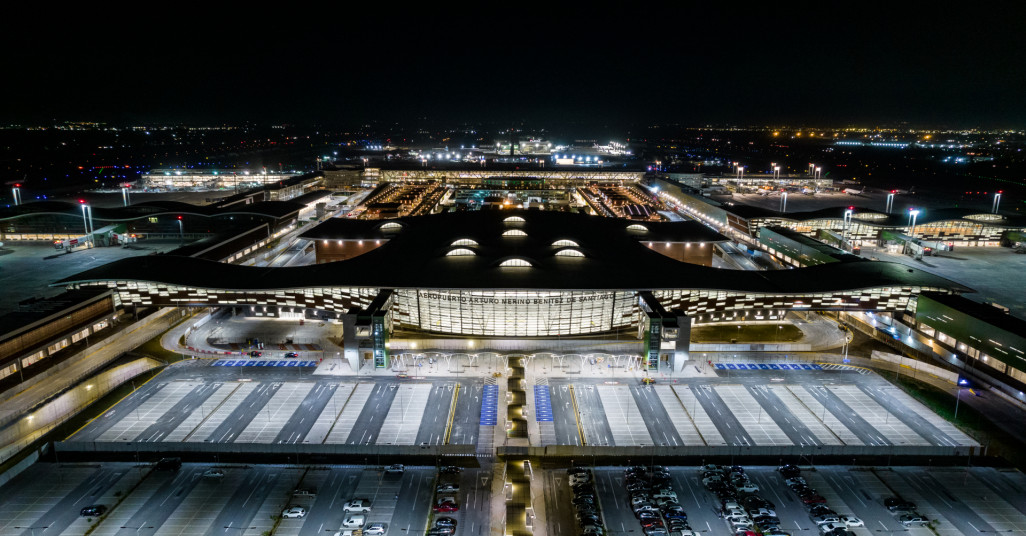

Holding
40% VINCI Airports
45% ADP (Aéroport de Paris)
15% Astaldi
End of contract (year)
2035
Number of Boarding Gates of the new terminal
76
In 2015, VINCI Airports, Aéroports de Paris (ADP) and Astaldi were awarded the contract to manage Santiago airport, the main gateway into the country.
VINCI Airports and its partners have launched a vast project to expand Santiago airport to meet the growth in international and regional traffic and make Santiago a hub for South American air transport.
One of the VINCI Group's largest projects outside France, the work finalized in February 2022 has more than double the airport's capacity.
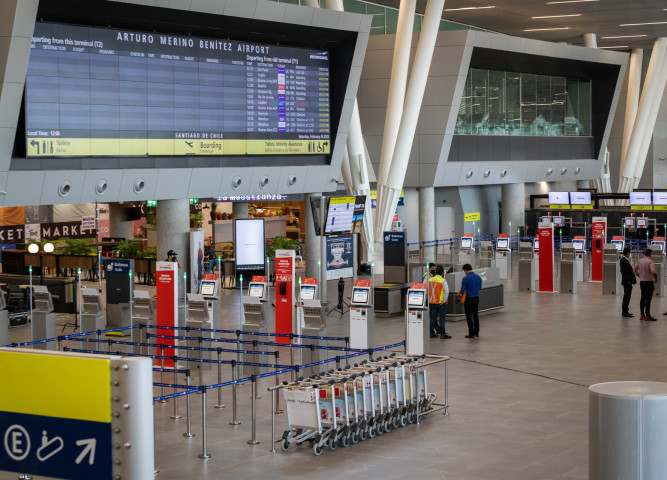
Opening up new opportunities
Supporting growth in air traffic
At the end of 2018, the first departure lounge of the future international terminal was inaugurated. Measuring 24,000 m2, it can handle 392,000 passengers each month and is equipped with five passenger boarding bridges that can accommodate between five and ten aircraft at any one time. Over 1,900 m2 of retail space was also built. The project placed passenger comfort at its heart – the new terminal is completely accessible to people with reduced mobility, WiFi is available throughout the building and play areas have been created for children.
At the end of 2019, the airport is continuing its huge expansion project by delivering Pier E, just a few months after delivering Pier C, without disrupting airport operations. The new structure includes 10 new boarding bridges and 13 new shops. It can accommodate over 400,000 passengers.
In February 2022, the commissioning of the new 248,400 sq.m international terminal turns Santiago airport into an international hub, the most modern in South America. With the extension of the existing terminal, now reassigned to domestic traffic, the airport’s capacity more than doubles, going from 16 to 38 million passengers a year. The work was carried out in less five years by VINCI Construction Grands Projets and Astaldi.
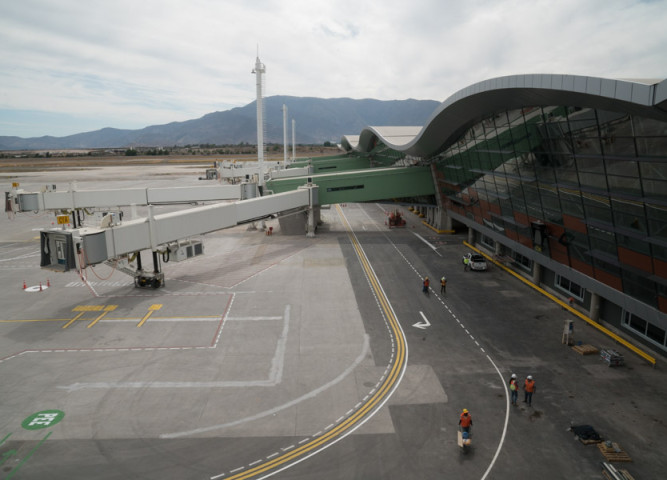
Challenges Met
Staying on schedule without disrupting operations
A challenge of this magnitude requires extensive experience in managing complex projects.
To facilitate building work and coordinate the multiple partners, BIM technology was used for the first time across the entire project. This method uses a 3D model to optimise design, visualise the project and collaborate more easily with the various participants.
Everyone involved is able to access all the information about the project (such as progress and modifications) using tools and software to more easily organise their work.
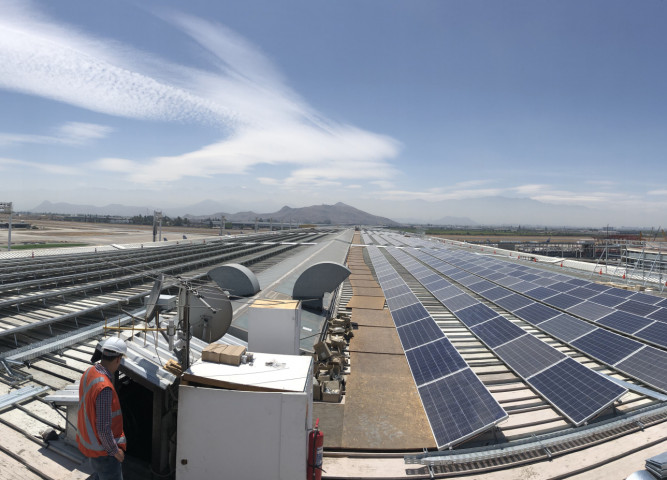
A sustainable airport
Santiago Airport commits to different initiatives that will reduce 40% of its CO2 emissions by 2030, and turn it into a zero-net emission airport by 2050. Thanks to them, the airport reached level 2 of Huella Chile in 2020, a voluntary program by the Chilean Ministry of Environment. Among the initiatives focused on reducing carbon footprint emissions are:
- Photovoltaic plant with a power of 825,774 kW installed on the roof of the existing terminal
- Reforestation plan
- Signing a “green agreement” with ENGIE to supply the air terminal with energy from 100% renewable sources.
- Fitting of LED lights, as well as replacing 9703 fluorescent units (PL/Tubes), thus saving 70% in lighting energy.
- Deployment of electric vehicles charging stations
- Establishing the first recycling program
- A food waste reduction plan
- -Signing of a Memorandum of Understanding to work on a plan to integrate this carbon-free fuel into the operations of Chile's main airport.
Key stages
- 2015: the Nuevo Pudahuel consortium is chosen by the Chilean government to manage and operate the Arturo Merino Benitez Airport.
- 2016: extension work began to double airport capacity by 2020. The programme covers a total surface area of 300,000 m2, two thirds of which represents the new international terminal.
- January 2017: British Airways launched the first direct flight between London and Santiago.
- 2017: work on the future international terminal began.
- June 2018: a free digital library was launched, the first of its kind in South America.
- 2018: annual air traffic reached 22 million passengers.
- December 2018: Pier C, the first departure lounge of the future international terminal was inaugurated by the Chilean President, Sebastian Piñera and the Minister of Public Works, Juan Andrés Fontaine.
- October 2019: Inauguration of the brand new Pier E during an official inauguration ceremony in the presence of Sebastián Piñera, President of Chile
- 2020: International Terminal, east piers and connectors D and F continue being built
- February 2022: Inauguration of the international terminal

Salvador Bahia airport
VINCI Airports entered the market in Brazil in 2017 when it signed the concession contract for the airport in Salvador ...
See the infrastructure